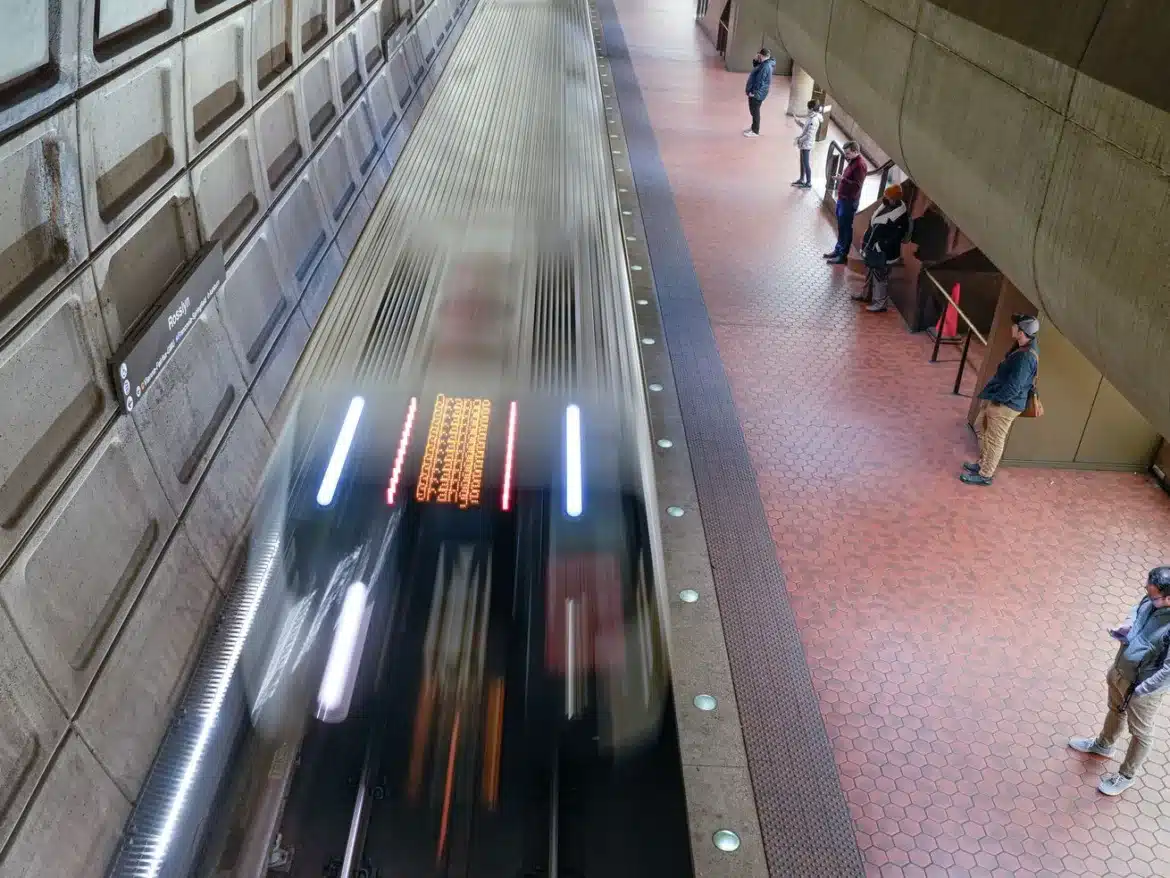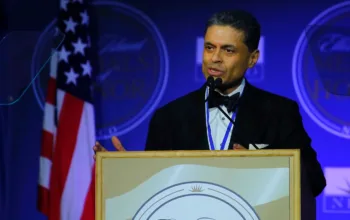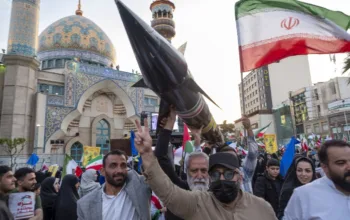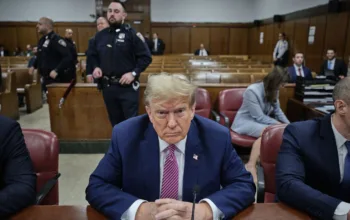What other cities can learn from DC’s transit recovery.
If the United States had a public transit problem, Washington’s Metro was a good case in point. In the years leading up to the Covid-19 pandemic, DC’s transit system — widely considered to be one of the best in the nation — found itself plagued by frequent delays, safety concerns, and falling ridership.
Other US cities were struggling, too. America’s public transit agencies often fall victim to a vicious cycle that looks something like this: Politicians slash budgets, agencies cut their services, riders look for alternative ways to get around town, and fare revenues take a hit — eventually leading to even more cuts, fewer riders, and so on.
Over the last couple of years, despite being bogged down by some safety issues, DC has tried to break out of that cycle. Flush with cash from federal pandemic aid, the Washington Metropolitan Area Transportation Authority (WMATA) doubled down on an “if you build it, they will come” strategy. It improved bus and train services and, in some cases, made fares more affordable in order to lure riders back. While other transit agencies took similar approaches — including reduced fares for riders or handing out signing bonuses to hire more workers — many still imposed service cuts rather than expansions.
WMATA’s strategy has been successful so far: In February, ridership across the system was at 83 percent of pre-pandemic levels, and DC has now seen a faster transit recovery than any other major metro area with a comparable public transportation network.
“It’s a risky approach, because it means they’ve spent more money more quickly,” said Yonah Freemark, a researcher at the Urban Institute who often focuses on transportation policy. “At the same time, the process has paid dividends.”
For transit agencies like DC’s Metro, Covid relief funds created a new paradigm
Fares alone never cut it. In 2019, for example, fare revenue covered less than a quarter of the operating costs of the country’s 100 largest transit agencies — nowhere near enough to keep the trains running. And that was before the pandemic.
“Transit is not a money-making endeavor,” said Jarred Johnson, executive director of TransitMatters, a public transportation advocacy group in Massachusetts. “There’s really very, very few places in the world where transit makes money, and where it does, driving is extraordinarily expensive.”
That’s why federal Covid relief money was so transformational for agencies like WMATA. It freed them from worrying about revenue — at least in the short term — and gave them the ability to focus on providing a good and affordable service. Had there been no federal aid, DC’s transit agency wouldn’t have been able to invest in hiring staff, improving train and bus frequency, or reducing costs for riders. And ridership would likely be nowhere near where it is today.
Despite this obvious lesson, transportation agencies across the country will still have to overcome a deep-rooted culture in government that deprioritizes transit, dating back to Ronald Reagan and his crusade against welfare and public services. In 1979, President Jimmy Carter proposed a $50 billion spending plan to “reclaim and revitalize America’s transit systems.” But “that initiative fell apart during the Reagan years due to austerity politics,” Freemark said.
The Reagan administration swiftly abandoned Carter’s idea and cut transit funding by over 30 percent. During those years, the idea of meaningfully subsidizing public transit was under attack. David Stockman, Reagan’s first director of the Office of Management and Budget, for example, considered subsidies for transit agencies’ operating costs a “special abomination.”
Since then, the federal government has largely steered clear of subsidizing operating costs of public transit, particularly in large urban areas, and has focused its money mostly on capital improvement projects. So instead of cobbling together funds for necessities like hiring more bus drivers to provide more frequent service, cities end up spending hundreds of millions of dollars on splashy projects like an isolated streetcar line that comparatively serves very few people.
Covid funds changed all of that. Through the various relief packages, the federal government injected $14 billion into transit agencies to make up for lost revenue and pay for day-to-day operations. Agencies like WMATA showed Americans just how much federal subsidies can achieve when they are directed toward operational costs: In 2023, Metro announced that it would run more train service than at any point in its history.
Transit shouldn’t just prioritize 9-to-5 commuters
One of President Joe Biden’s successes has been getting the federal government to invest in America’s infrastructure. The Federal Transit Administration, for example, says the bipartisan infrastructure law is the “largest federal investment in public transportation in the nation’s history.”
Still, throwing more money at America’s public transit problem alone isn’t going to fix it. Transit agencies and elected officials also have to embrace a different culture around public transit and reimagine the purpose it serves.
Historically, transit networks have been designed around a 9-to-5 work schedule, shuttling people from residential areas into downtowns and back. With remote work sticking around, it’s unlikely that 9-to-5 commuters will fully return to pre-pandemic levels anytime soon. If transit agencies hope to bring in new riders, they have to start catering more deliberately to nonwork commuters.
“We have to move away from transit serving work trips,” Johnson said. “Transit needs to be useful for doctor’s visits, for going to see friends and family, for going to a play.” In order to get there, Johnson says transit agencies have to provide better schedules throughout the day, not just during rush hours, and to rethink when they schedule repair work.
It also means getting creative with pricing. WMATA reduced fares on weekends, added more service during off-peak hours, and discounted passes for seniors, people with disabilities, and low-income riders. According to the Brookings Institution, off-peak and weekend ridership in Washington, DC, has seen a better recovery than rush-hour transit commutes. Weekend ridership has also surpassed pre-pandemic levels by 17 percent on Saturdays and 28 percent on Sundays, according to Metro.
Changing the culture around using public transportation, however, can’t fall on transit agencies alone. One of the biggest impediments to maximizing service is that most systems still mostly revolve around office buildings that have only become more vacant since Covid. “The problem with the US that we face is that our downtowns have historically been, and most cities continue to be, quite monofunctional in form,” Freemark said. American downtowns are “almost entirely devoted to office uses.”
One fix would be for cities to redevelop their downtowns to be more residential. And while that’s not necessarily an easy — or inexpensive — task, it’s a critical step toward encouraging people to be less reliant on cars. Some cities, including DC, are trying to do just that. Earlier this year, for example, Boston announced that it would offer tax credits to developers seeking to convert empty offices into housing.
Governments should recognize that public service isn’t a business
The federal government has long imposed unrealistic standards for agencies to operate like businesses. But transit is a public service and ought to be treated as such. That means accepting that it will require investing a lot more taxpayer money — from both the federal and state governments — to make it run efficiently and serve people well.
As Randy Clarke, WMATA’s general manager, put it in an interview with NBC4 Washington last year: “We are a public service, right? So whether it’s people five days a week, three days a week, every day of the week, it doesn’t matter. We have to value public transit and fund it accordingly, or have a diminished system, and then we have to be honest: We’re gonna have impacts to our economy; we’re gonna have impacts to equity; impacts to the climate.”
In December, WMATA was projecting a $750 million deficit by 2025. The agency warned that if that gap wasn’t closed, the proposed service cuts would be catastrophic: Metro said it would have to lay off over 2,000 workers, eliminate almost half of the system’s bus lines, close down entire Metro stations, and increase wait times — all while hiking fares by as much as 20 percent.
Clarke oversaw the Covid-era investments in DC’s transit and capitalized on the popularity of the system’s improved service to pressure the region’s jurisdictions to invest more money in Metro.
The months that followed showed that Clarke had made a successful gamble: Not only did liberally spending pandemic aid help build a service that people wanted to ride, but by the time the cash started running out, WMATA had made subsidizing transit a more popular idea.
Since the agency warned of its proposed service cuts, the jurisdictions it serves started coughing up cash. The District of Columbia, Maryland, and Virginia have proposed committing a total of $480 million toward closing the projected budget deficit.
“The approach to spending money on improving service is really about creating public support for the transit network, and political support, ultimately,” Freemark said.
Ultimately, WMATA made a bet based on a simple premise: Give people a public good they like, and politicians will have a hard time taking it away. And it seems to be working — at least for now.



